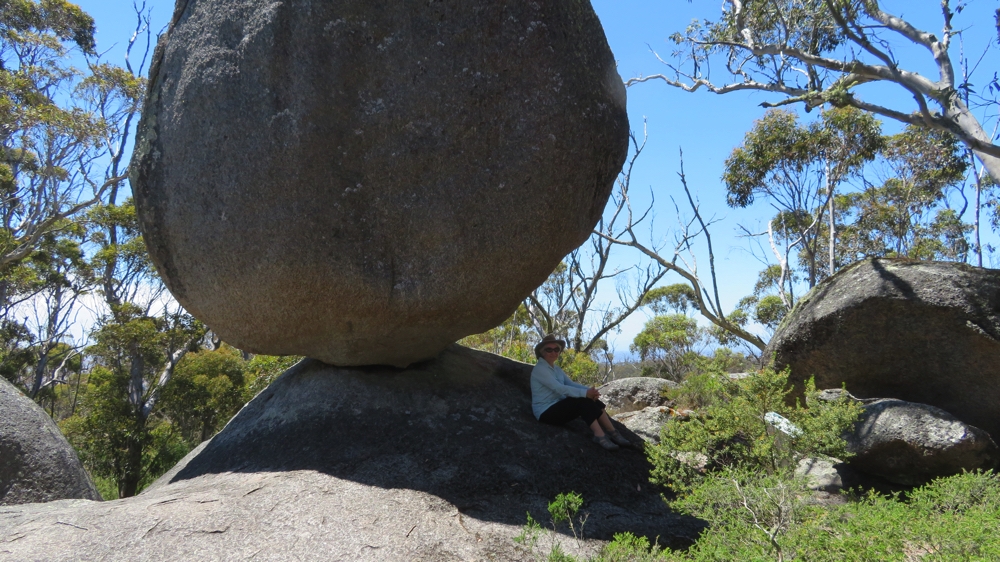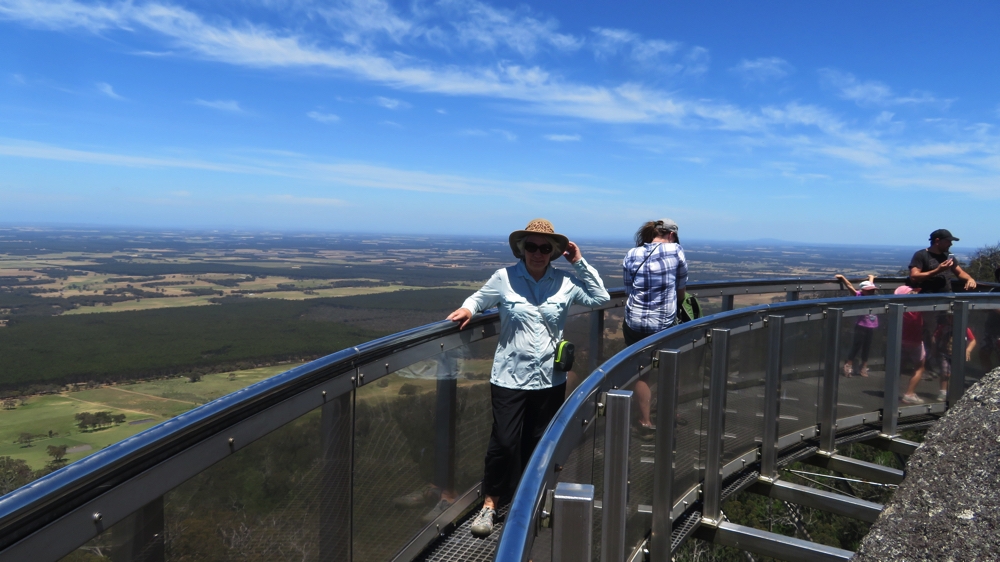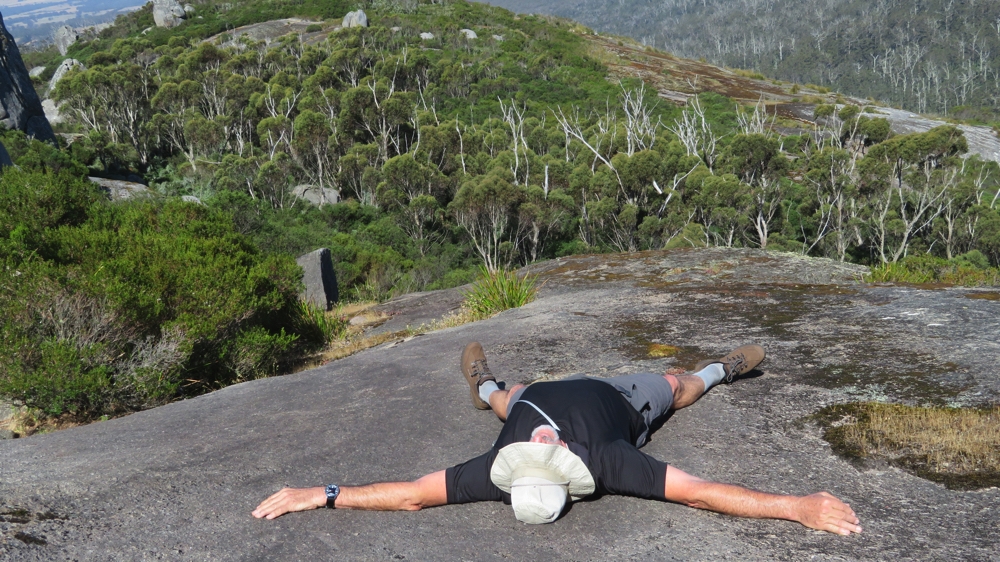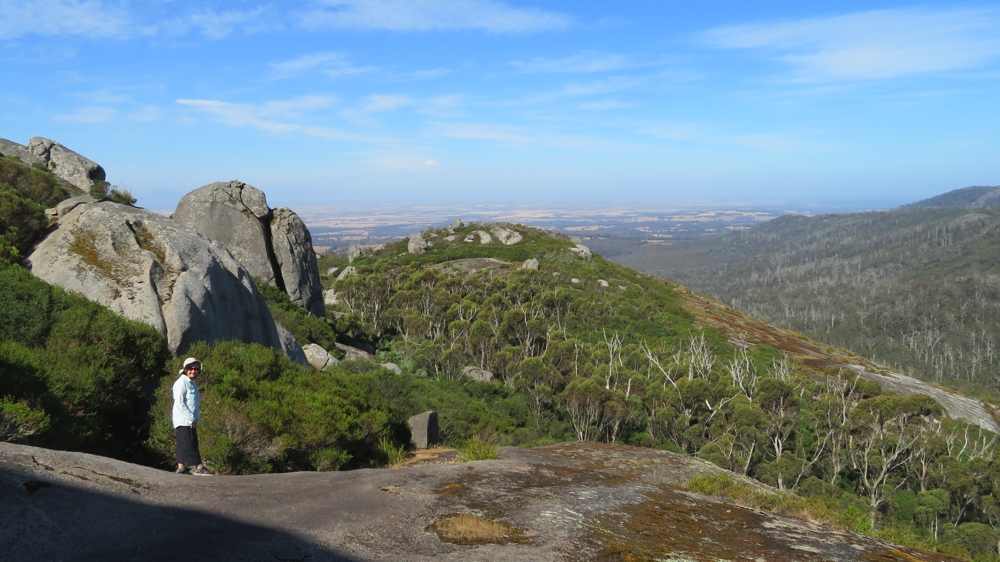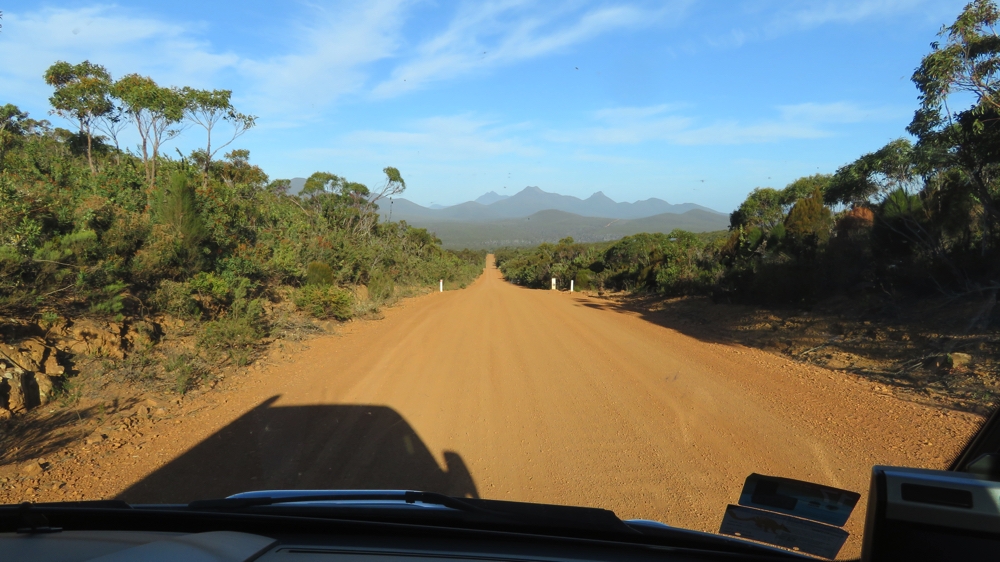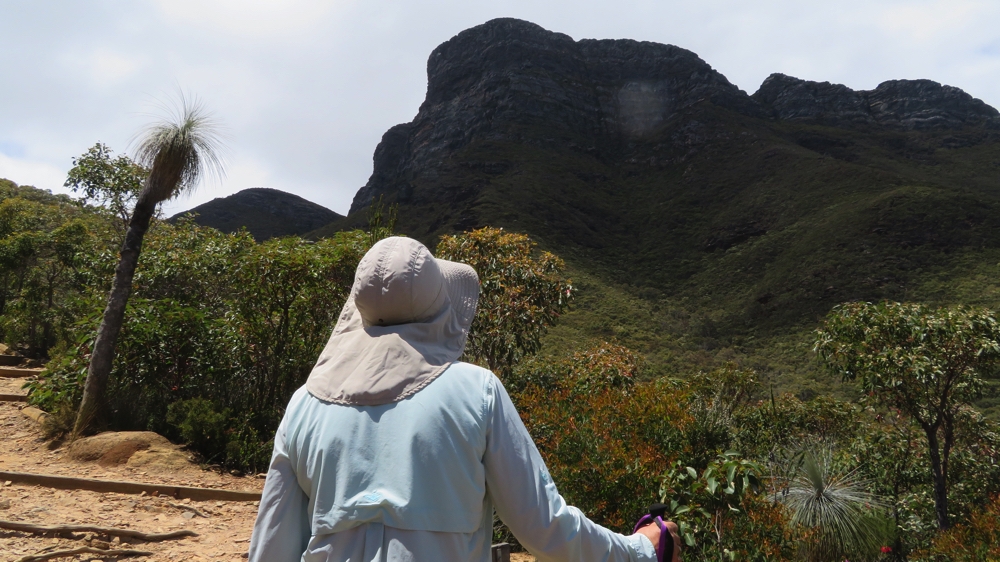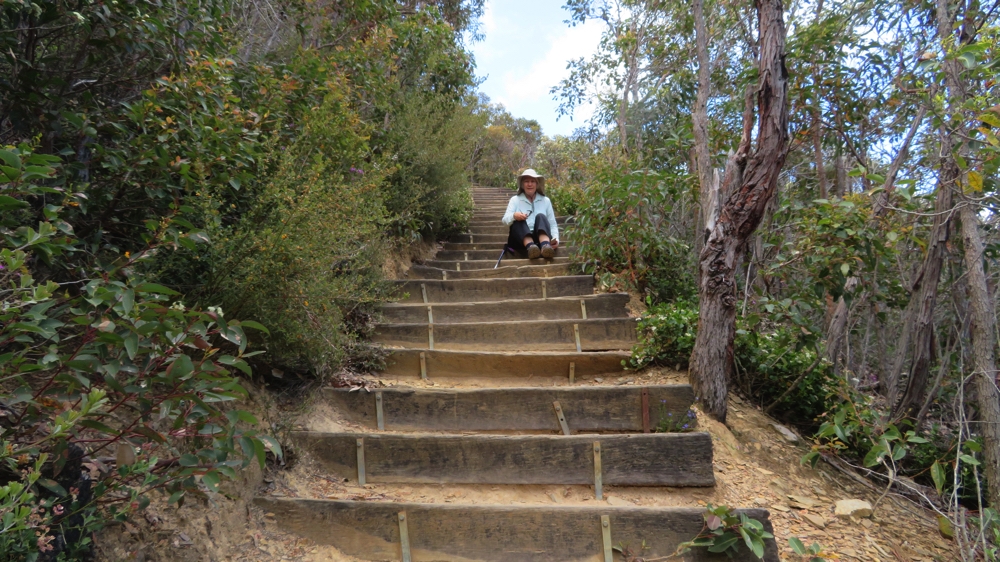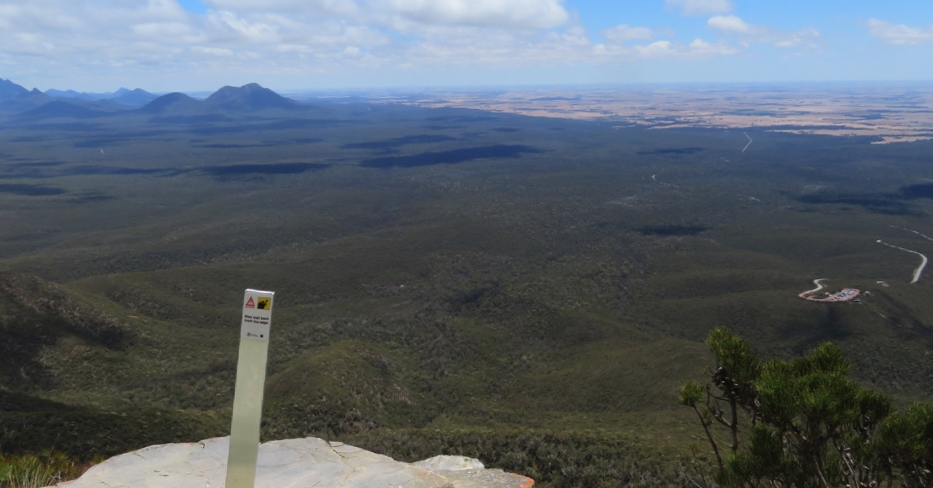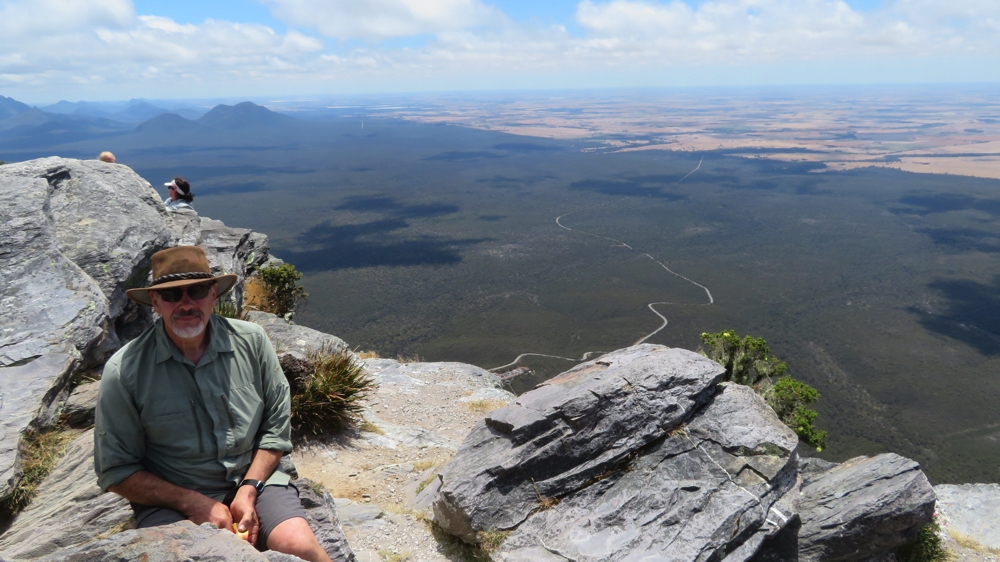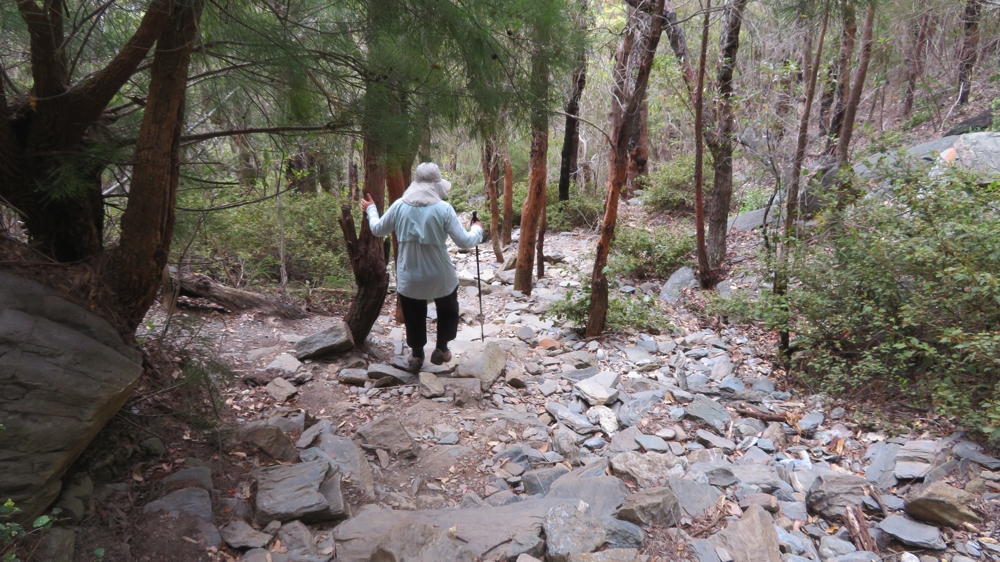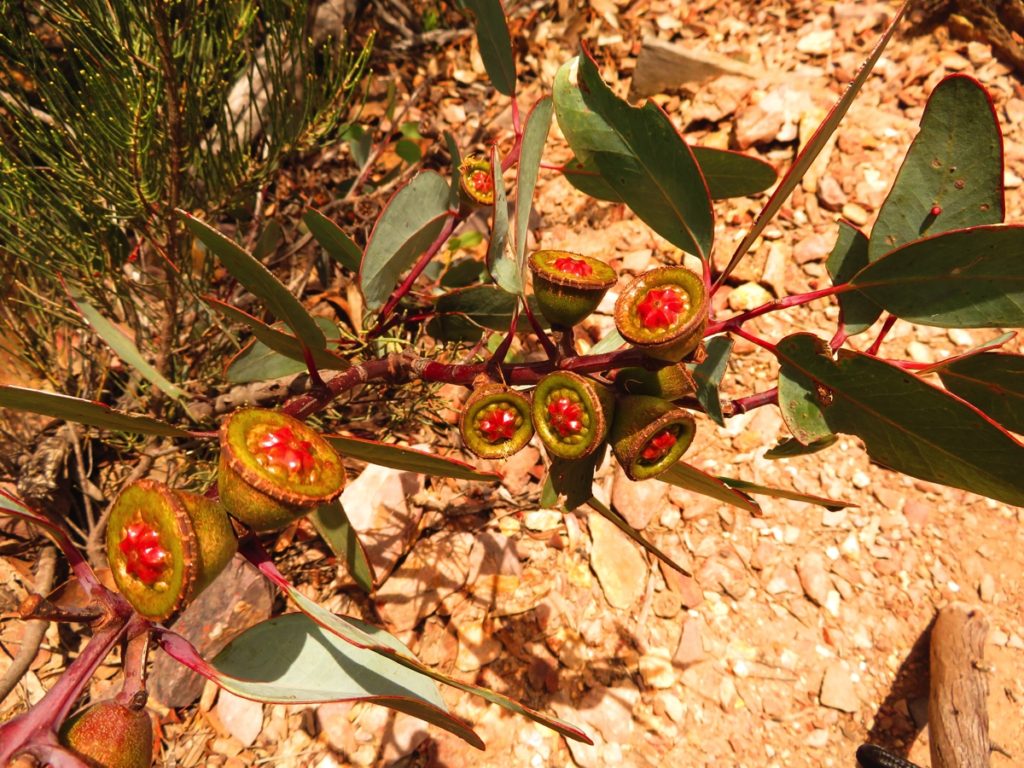27th – 30th November, 2017
Monday 27th (Happy birthday John)
We’re heading for the coast now to see a bit more of WAs famed southern coastline. We were camped amidst wheat farms last night at Louis Lookout and today’s drive was through wheat and sheep country all looking very brown, either just harvested stubble or awaiting harvesting. Many laden trucks passed us headed for storage bins – big open-air ones, the wheat covered with tarps as each section is filled.
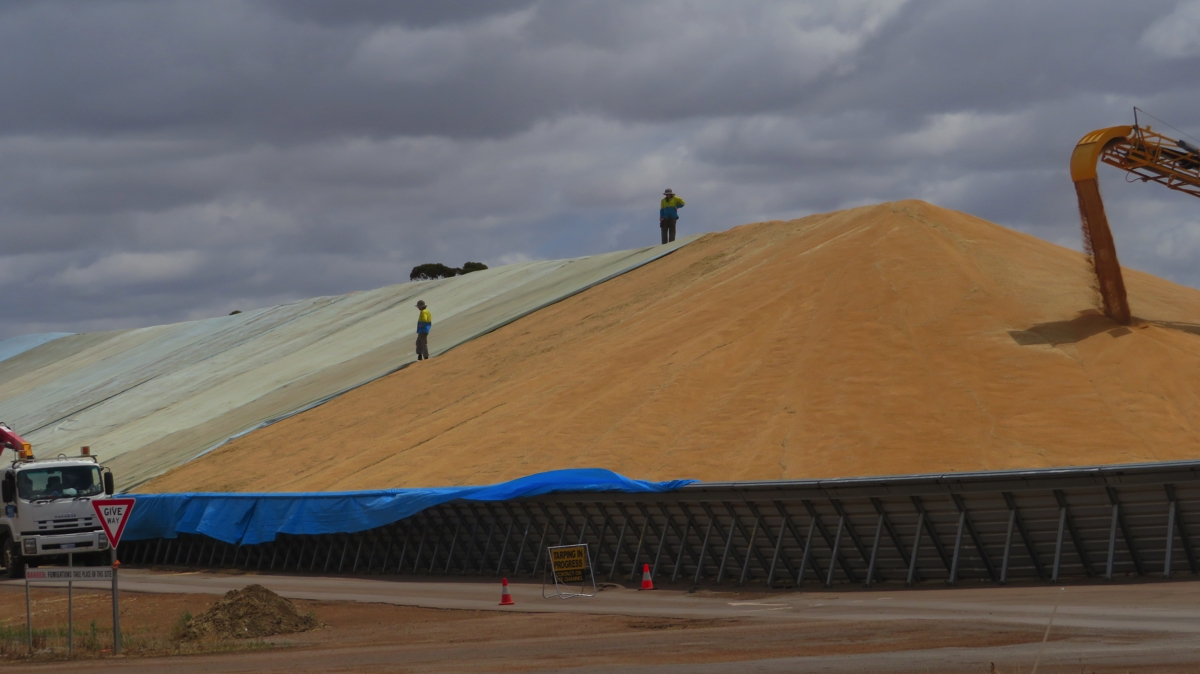
The grain on the conveyor belt is pouring in from a trucks that have just delivered it. Note the huge tarps covering the grain.
We stopped at Ravensthorpe for a look-around then headed to Hopetoun. Along the road there’s a couple of ‘Art in the Paddock’ sculptures, which are very good, but they probably need a few more to make it a ‘trail’.
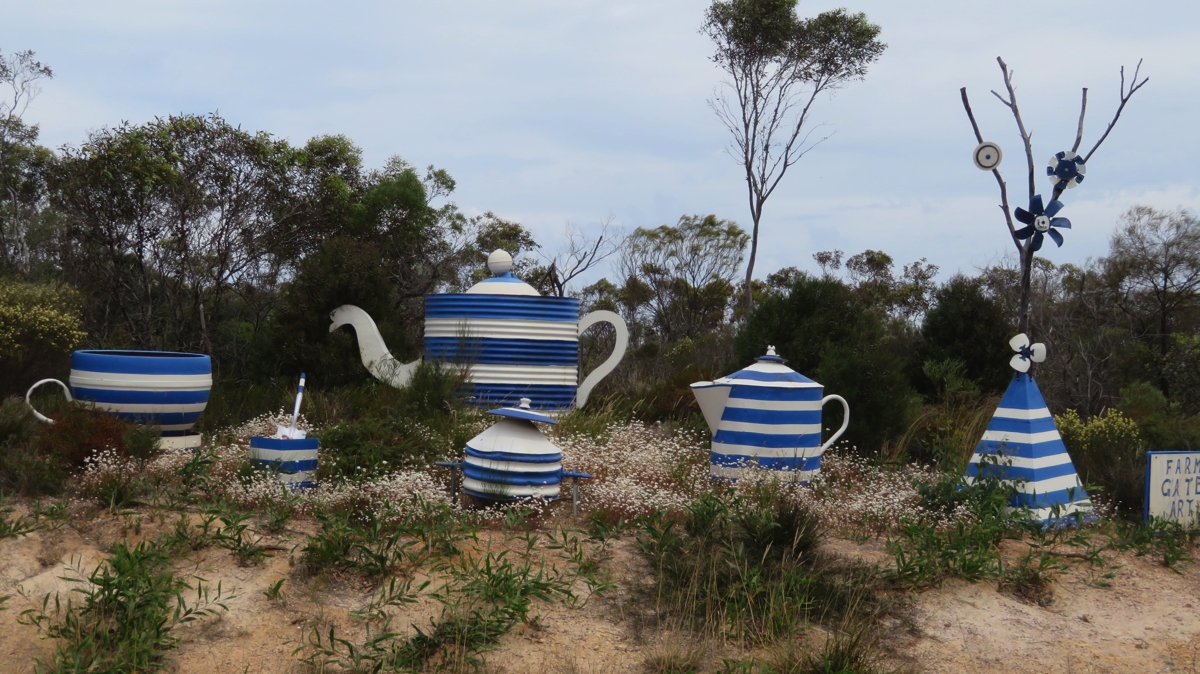
This tea setting is wonderful – made from junk – corrugated iron for the teapot.
What a gem of a place Hopetoun is! It’s a tiny town, but has a couple of well-tended parks, one with very good children’s activities, another with BBQ, tables, etc beside the beach, a couple of cafes, a pub and a good walking path along the foredunes. The beach looks lovely, but too cold (still!) for a swim. For the RV traveller there’s the free campsite where we are next to the beach (no facilities), free hot showers in town, a designated ‘potable water’ spot to fill tanks, dump point and a car wash big enough to do motorhomes. There’s no industry here and it’s not on the way to anywhere, so just a holiday destination.
Tuesday 28th
Leaving Hopetoun we went back to Ravensthorpe then turned east, travelling predominantly through wheat and grazing country – all brown.
Tonight’s camp is at Quagi Beach, 10km along a reasonable dirt road off the highway. This council-run camp ($15/n) has about 17 campsites separated from each other by thick scrub, which is predominantly flowering banksias – beautiful!

Flowers around the campsites at Quagi Beach. The yellow one is known locally as the Christmas bush. But also note all the banksias flowering.
We’ve arranged to meet Ally and Rob here, fellow Jabiru owners who we first met by chance on the road at Exmouth many months ago as they headed north and we headed south. They’ve circumnavigated Australia since then! An enjoyable afternoon was spent chatting about places we’ve been to and checking out each other’s vehicles.
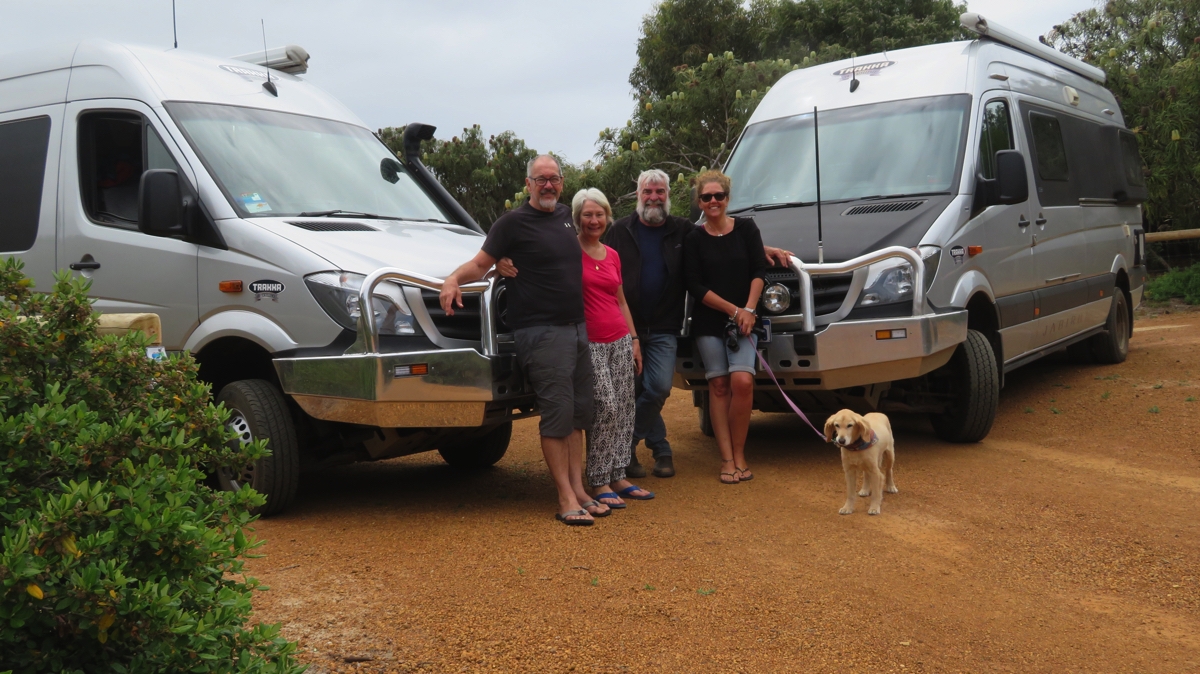
With Rob and Ally (and Charlotte) and their Trakka Jabiru at Quagi Beach.
Wednesday 29th
The four of us went for a walk along Quagi Beach this morning before heading our separate ways – Ally and Rob towards Perth, us to Esperance.

Quagi Beach.
There’s a Scenic Ocean Drive just before Esperance which took us off the highway, around the Pink Lake (which isn’t pink anymore) and alongside the ocean and into Esperance. There are dozens of really pretty beaches along this coastline – mostly small ones, some very well-protected, some with picnic facilities. They’d be heaven on a hot summer day.
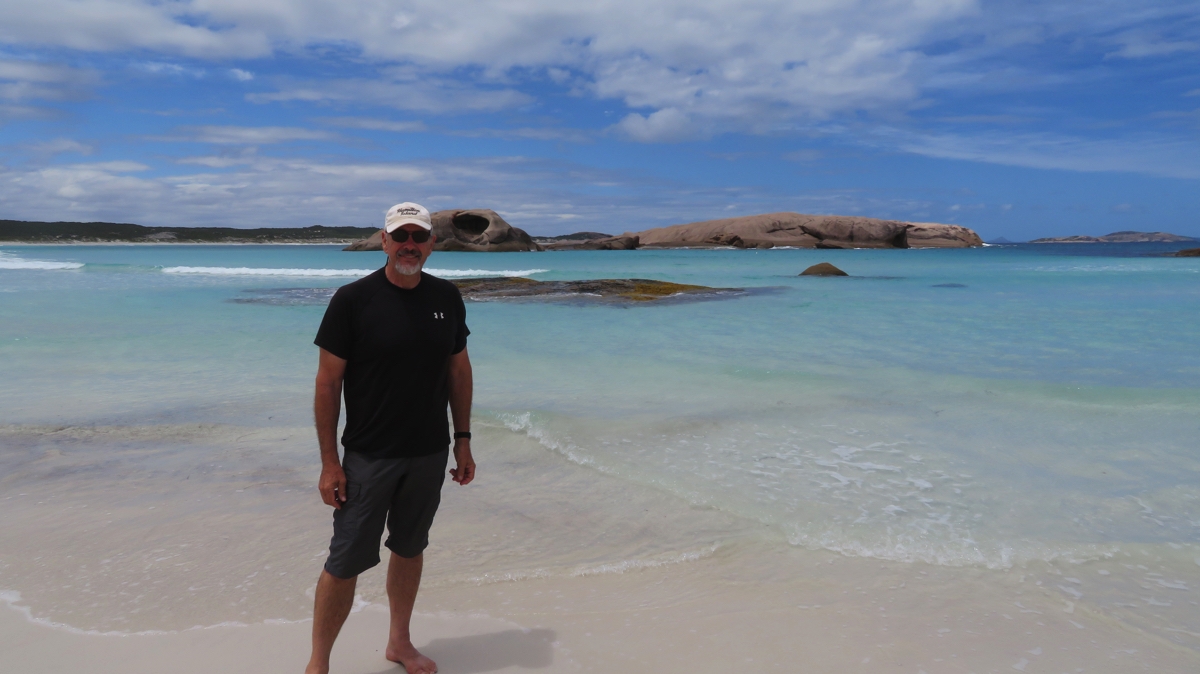
You going for a swim Steve? Nope – too cold! At one of Esperance’s beaches.
Esperance was named in 1792 by French explorers after one of the two French ships that sheltered from a storm behind the island in the photo above . Grazing was the industry that was initially established some 60 years later, but the town really came alive when gold was discovered nearby in 1893. The town’s fortunes fluctuated until around 1960 when it became a major agricultural region – wheat, barley and canola being the main crops. It also seems to do pretty well out of tourism.
We walked from the Port, where a ship was being loaded with grain, to the old jetty, recently badly damaged in a storm. The foreshore is beautiful – well-tended gardens of native shrubs, cycling and walking paths, heaps of picnic areas all the way along and the walk culminating at a coffee van that sells really good coffee.
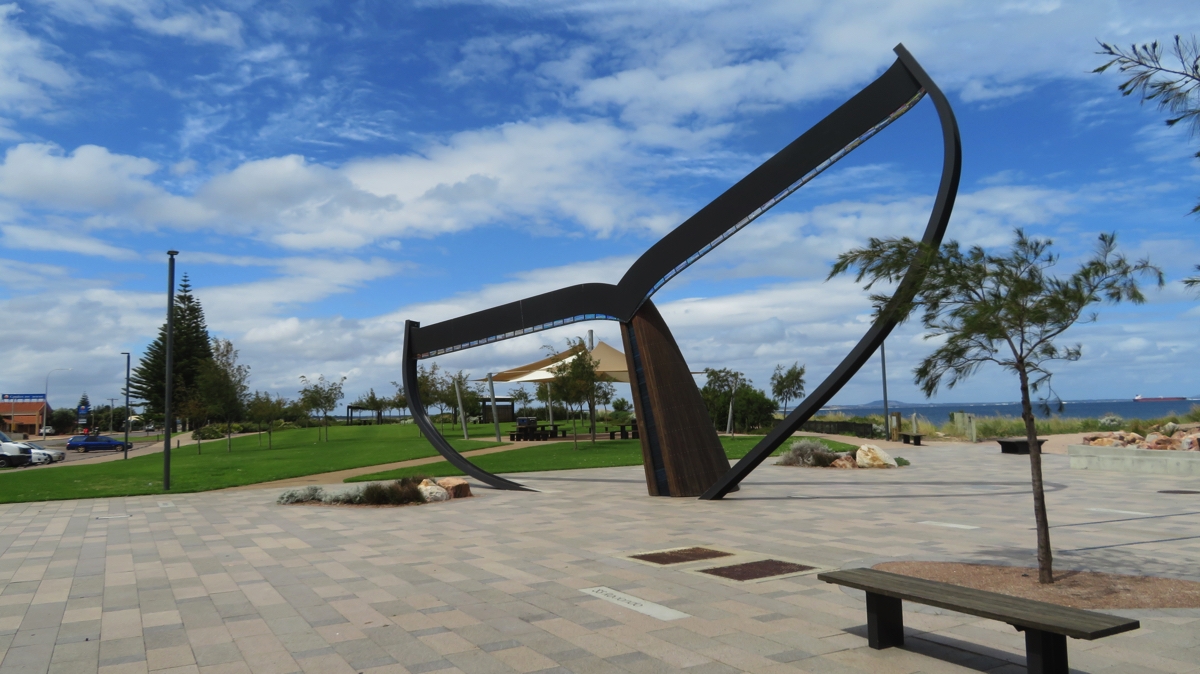
The beautiful foreshore of Esperance. An art installation paying tribute to the Southern Right Whales that pass by every winter.
Leaving the ocean, all too prematurely, there being some great National parks down here we haven’t had the time to explore, we headed half an hour north to Gibson Soak – a free camp at a pub. Quite a large camping area had maybe 10 other campers and most seemed to head to the pub for a drink and meal – as we did.
Thursday 30th
An uneventful drive north finds us this evening at Norseman. This is the last major town in WA before crossing the Nullarbor, and tending travellers of the Nullarbor helps sustain this old gold mining town. Gold was first discovered here in 1892, reputably by a prospector’s horse named Norseman who kicked a large nugget. A statue to Norseman is in the town centre. It does look like a struggling town these days though.

A statue of the horse after which Norseman was named – hoof raised indicating gold just there!
We did our shopping here, ready for our crossing of the Nullarbor, then settled in to the free camp they’ve provided. Only two other campers here though – very quiet.
For more photos from these last few days CLICK HERE.

